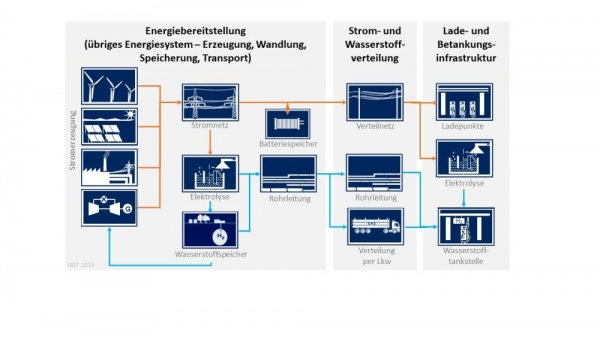
27.6.2019. According to recent estimates, will be in the year 2020 on Germany’s roads around 500,000 Cars with electric drives on the road Two years later, it should be according to the plan of the Federal government, around one Million E-cars.
An open question is whether our electricity networks of the additional load and where in the infrastructure the need to invest. Because electric mobility is not only in conurbations, but also in small towns and rural areas.
For this reason, the ADAC Foundation sponsored the study, “analysis of a coordinated infrastructure construction for the supply of battery – and fuel cell vehicles in Germany”, Ludwig-Bölkow-Stiftung, which was conducted from October 2017 to may 2019, together with the Ludwig-Bölkow-Systemtechnik GmbH and the Institute of Applied system technology (AST) of Fraunhofer IOSB.
Dr. Andrea David, member of the Board of the ADAC Foundation: “Against the Background of climate – and health protection must be taken into account all of the low-emission vehicle technologies. Since the goal of the climate protection plan 2050 by the Federal government for the road transport from the point of view of experts with a purely battery-powered vehicles can not be achieved, we need the Infrastructure both for the battery as well as fuel cell technology is considered. With the scientific study of the Ludwig-Bölkow-Stiftung, we want to make a contribution to the infrastructure in Germany is to get fit in time for a electric mobility based on renewable energies.“
The study calculated the cost of the infrastructure for the introduction of 40 million zero-emission passenger Cars in Germany up to the year 2050. The Interaction of the infrastructure for battery and fuel – cell vehicles is analyzed in three scenarios with different shares of vehicle technologies. Spatially examples for urban spaces, the small and suburban area and the rural area studied and the network, we calculated a need for expansion.
“In small towns, the large urban bacon belts and in rural areas, more needs to be invested. Here, the increase in electricity demand by battery-powered Cars will be even more noticeable. The large number of commuters, for the E-mobility is likely to be attractive, wants to take the network more than it has done so far. In addition, the networks in the periphery and on the flat Land are expanded weaker because of the large number of Establishments with large power consumption is missing.“ explains Dr. Werner Zittel, chief Executive of the Ludwig-Bölkow-Stiftung, the most important results of the study.
The fuel cell would be a perfect complement to battery technology. By hydrogen gas stations, there would be no additional bottlenecks in the electricity distribution network. The main need for expansion of electricity distribution networks could be shifted by the parallel Development and the use of hydrogen in time-to-rear and reduced, Zittel continued.
In addition, in the study by the use of parallel, so a Mix of 50 per cent, battery – and fuel cell-powered vehicles what is calculated, a significant cost savings in the amount of 6 billion Euro per year. The cost difference to a scenario that assumes 80 per cent battery-powered vehicles, is based mainly on the expected size of the advantage For battery-powered vehicles, many individual charging points need to be set up. The Refueling of hydrogen would be larger and cost-efficient fuel possible.
“From this study, the recommendation on policy, communities and the economy, the Expansion of infrastructure for electricity and hydrogen in a timely manner, in parallel and in a coordinated drive results.” adds David. “Only in this way can be Overloading and reduce the costs avoided. The course for the efficient development of a sustainable infrastructure for E-mobility we need to ask today.“
The study is available at stiftung.adac.de.


So the stream might look like cycle (source: ADAC Stiftung)